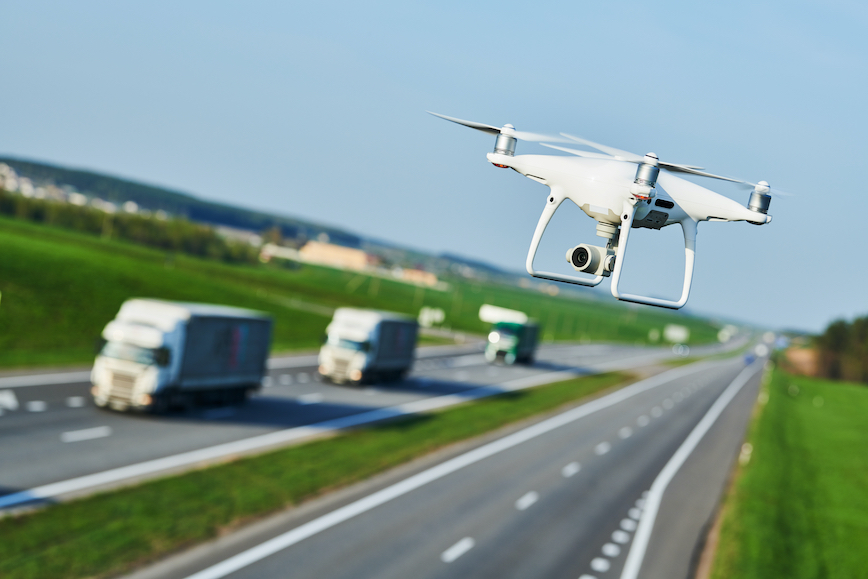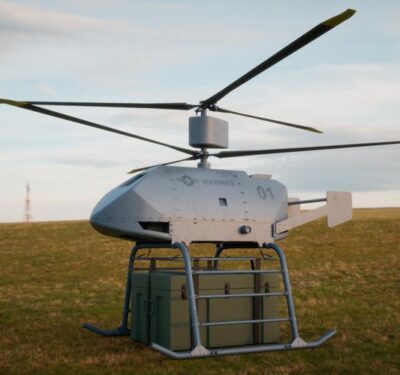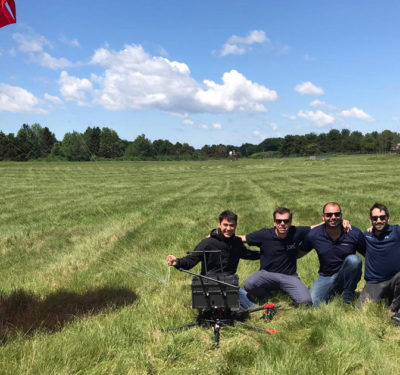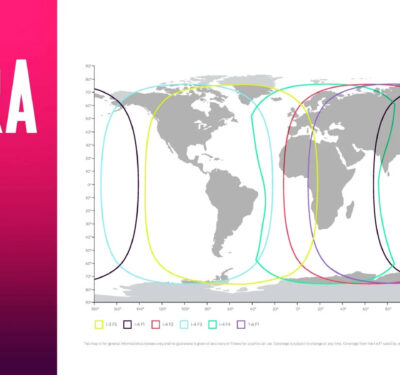
Drone with camera controls highway road conditions. Courtesy Flying Forward 2020.
Three projects funded by the European Union have launched a collaborative network of urban air mobility (UAM) development programs for European cities.
The European UAM industry has grown rapidly in recent years, with diverse research and development activities from organizations, academia, governments and the European Commission, aiming to provide safe and efficient solutions with reduced carbon footprint. Using very-low altitude zero emission passenger or cargo-carrying drones will enable cities to improve the quality of life of their citizens.
Currently, the urban airspace ecosystem consists of a number of small, independent networks. To become sustainable and make a long-term impact, a more comprehensive coalition must produce an integral vision and better aligned outcomes.
The three founding members of the coalition are Flying Forward 2020, AiRMOUR and www.aurora-uam.eu. Flying Forward 2020 is a three-year collaborative research project that will develop a new UAM ecosystem aligned with the Digital Government Transformation (DGT) of European countries, which focuses on incorporating UAM within the geospatial data infrastructure of cities. AiRMOUR is a research and innovation project supporting sustainable air mobility via emergency medical services. AURORA (sAfe Urban aiR mObility for euRopeAn citizens) will develop and integrate safety-critical technologies to support autonomous flight UAM in urban environments, focusing its demonstrations primarily on emergency-related applications.
The coalition’s work is further supported by UAM initiatives Single European Sky Air Traffic Management Research Joint Undertaking (SESAR JU), a public-private partnership established in 2007, and UAM Initiative Cities Community (UIC2).
The common purpose of this collaborative network is not only to establish an ecosystem of UAM solutions, but also to increase stakeholder and public knowledge and acceptance of these new developments and solutions. It also provides opportunities to exploit the synergy between each project and the associated demonstrator cities.
Joint activities of this network will include the following tasks:
- Developing public and private partnerships (PPP) with Unmanned Aircraft Systems (UAS) industrialists, Unmanned Aerial Vehicle (UAV) operators, infrastructure developers, local governments and regulators to further develop and incorporate very-low altitude UAS transport.
- Consolidating current UAM activities to form a community of knowledge transfer and engagement-building practices.
- Unifying stakeholder management processes to organize, monitor and improve relationships with stakeholders to achieve a successful positioning of this UAM ecosystem globally.
- Connecting urban airspace experts from different sectors of the ecosystem to facilitate crossover industry innovation and knowledge transfer
In the coming years the projects will showcase interesting real-life demonstrations, state of the art technologies and will work on improving UAM regulatory frameworks.
Regulation can be swiftly outpaced by technology. As urban airspace operations are continuously evolving, valid questions regarding safety and possible bottlenecks will continue to be raised, which is why it remains imperative to maintain an open dialogue with European Member States and regulating bodies. This collaborative network builds, integrates and aligns technology, along with EU-compliant interoperability, governance model and legal frameworks.






